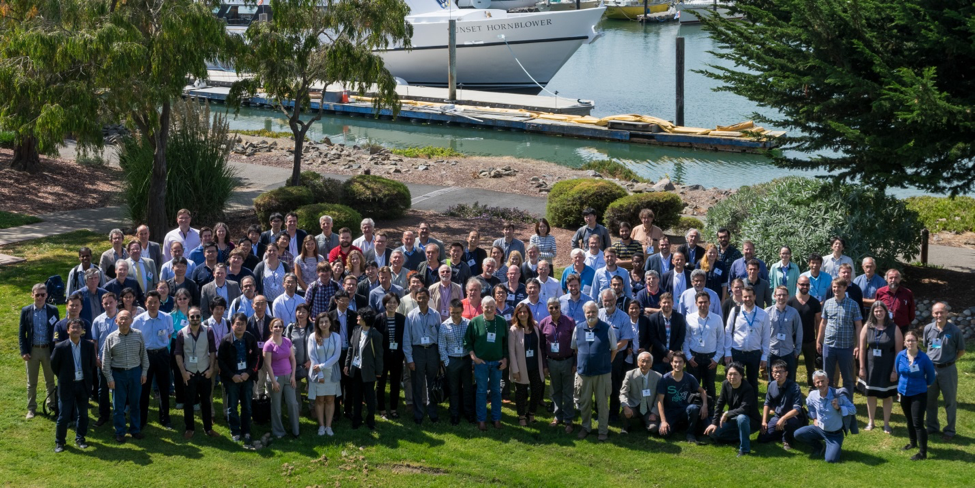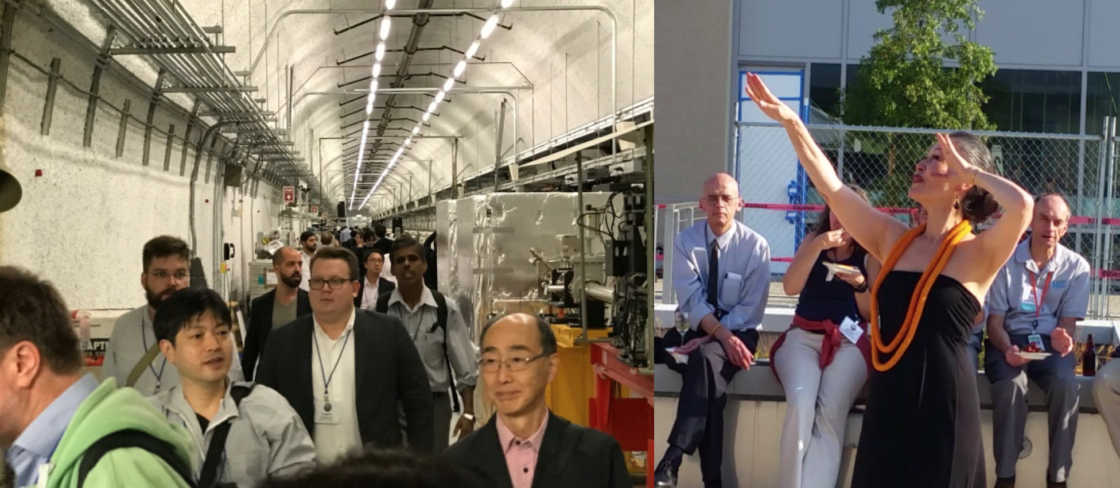by Chuck Fadley, Zahid Hussain, Piero Pianetta
Earlier this month, Berkeley Lab and SLAC hosted the 7th International Conference on Hard X-Ray Photoelectron Spectroscopy (HAXPES). This biennial meeting has grown from a small workshop held at ESRF in 2003 with about 50 participants, to a truly international event, which this year attracted 150 participants from 20 countries. This year’s event was co-chaired by Chuck Fadley (Materials Sciences Division, Berkeley Lab, and UC Davis), Zahid Hussain (ALS, Berkeley Lab), and Piero Pianetta (Stanford University and SLAC).

HAXPES is a new aspect of photoemission that uses hard x-rays with energies of roughly 2–10 keV. Compared to the traditional photoemission energies of ~10 eV–1.5 keV, these higher energies permit measuring properties more characteristic of the bulk, rather than the surface, of a given material. These energies also reveal the buried interfaces that are ubiquitous in nanostructured and multilayered systems. The range of applications of HAXPES is thus very broad, from fundamental studies of strongly correlated and magnetic materials and their interfaces, to operando investigations of model devices and surface interactions at high ambient pressures, to real world industrial systems and processes.
There are approximately 25 HAXPES facilities at synchrotrons around the world, with the number steadily growing. Beamline 9.3.1 at the ALS provides HAXPES capabilities for both condensed matter and ambient-pressure experiments and is currently being upgraded to increase flux and stability. First HAXPES results are also being reported from free-electron lasers.
The topics covered in the talks and posters at the conference were, likewise, very wide ranging, including:
- Atomic and molecular physics in the gas phase: complex final-state interactions and recoil effects;
- Strongly correlated and magnetic metal oxides and their heterostructures, including soft and hard x-ray angle-resolved photoemission (ARPES) outside the normal range of such studies;
- Wide bandgap semiconductors, including in-gap states;
- Memresistive oxide structures as novel memory devices;
- Interfaces in Li-ion and Mg-ion batteries, electrode/electrolyte interfaces;
- Ferroelectric, ferromagnetic and multiferroic device structures;
- Interface properties in the steel support of radial tires;
- Surfaces in interaction with gases and liquids at high ambient pressures going to 1 atm and higher;
- Variable light polarization and resonant excitation to delineate the makeup of electronic and magnetic states;
- Novel instruments for angle- and spin- resolved photoemission studies;
- The use of x-ray standing waves to study buried interfaces in nanoscale hetero structures and the atomic-layer makeup in single-crystal or epitaxial systems;
- Unique theoretical modeling of spectra, including angle-resolved photoemission (ARPES), standing-wave, and resonant phenomena;
- First measurements of time-resolved photoemission at the psec to fsec time scales, using both synchrotrons and FELs; and
- New opportunities for soft- and hard- x-ray photoemission at both synchrotrons and free-electron lasers, with talks and posters that covered all existing, newly commissioned and planned facilities, including ALS-U, LCLS-II, and others.

A student poster competition, funded by Elsevier through the Journal of Electron Spectroscopy and Related Phenomena, was held. The winners were Ravini Chandresena (Temple University) and Erik Schaefer (Johannes Gutenberg University Mainz).
Tours of both SLAC, including SSRL and LCLS, and the ALS were also part of the program. The conference banquet was held at SLAC and included Hawaiian entertainment and a talk by Ingolf Lindau on the origins of HAXPES.
The conference was bookended by an initial overview of the field by Wolfgang Drube (DESY) and a final discussion of highlights by Ralph Claessen (University of Wurzburg) and Hao Tjeng (Max Planck Institute Dresden). Abstracts and slides from talks are available on the website.

Financial support was provided by the ALS, SLAC, NSLS-II, APS, and UC Davis, and by the following exhibitors: Scienta/Omicron, Focus, SPECS, MBS, Inficon/Instrutech, Fermi Instruments, Prevac, RoSo Intruments, and Sigray. It was also endorsed by MRS, AVS, and IUVSTA.
The next HAXPES conference will go to Paris in 2019, hosted by Soleil Synchrotron and the Université Pierre et Marie Curie.
Complete information on the conference is available at the conference website.